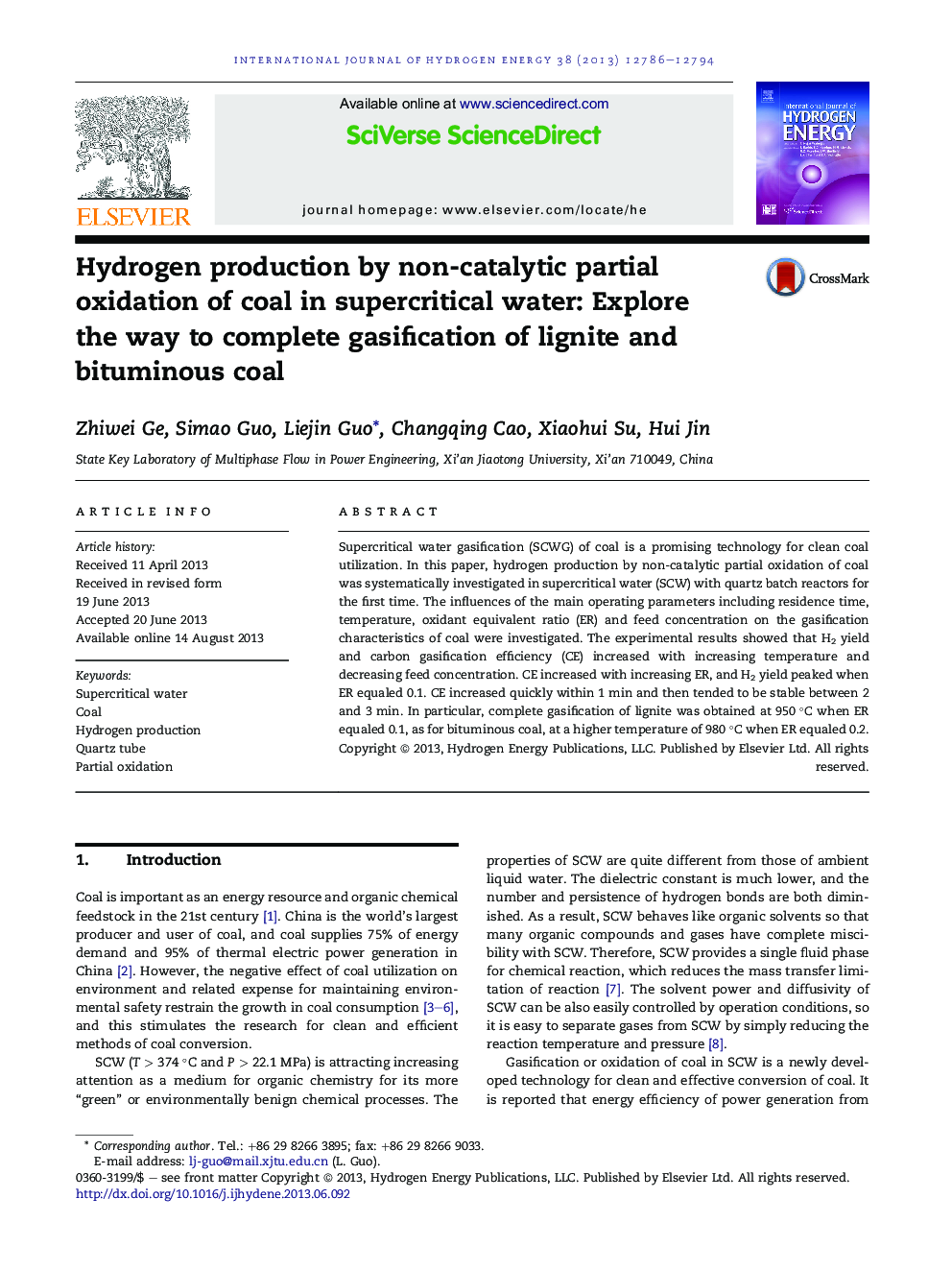| Article ID | Journal | Published Year | Pages | File Type |
|---|---|---|---|---|
| 7721441 | International Journal of Hydrogen Energy | 2013 | 9 Pages |
Abstract
Supercritical water gasification (SCWG) of coal is a promising technology for clean coal utilization. In this paper, hydrogen production by non-catalytic partial oxidation of coal was systematically investigated in supercritical water (SCW) with quartz batch reactors for the first time. The influences of the main operating parameters including residence time, temperature, oxidant equivalent ratio (ER) and feed concentration on the gasification characteristics of coal were investigated. The experimental results showed that H2 yield and carbon gasification efficiency (CE) increased with increasing temperature and decreasing feed concentration. CE increased with increasing ER, and H2 yield peaked when ER equaled 0.1. CE increased quickly within 1 min and then tended to be stable between 2 and 3 min. In particular, complete gasification of lignite was obtained at 950 °C when ER equaled 0.1, as for bituminous coal, at a higher temperature of 980 °C when ER equaled 0.2.
Related Topics
Physical Sciences and Engineering
Chemistry
Electrochemistry
Authors
Zhiwei Ge, Simao Guo, Liejin Guo, Changqing Cao, Xiaohui Su, Hui Jin,
